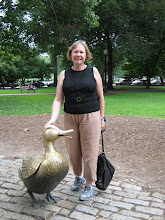Snorkelling (two letter l in Australia and Britain) is the practice of swimming through the water while equipped with a diving mask, a shaped breathing tube called a snorkel, and usually swimfins. It requires little effort as long as one knows how to swim, as you don’t need training or any complicated equipment.
The first use of ‘snorkel’ was in November 1950, when the Honolulu Sporting Goods Co. introduced a ‘swim-pipe,’ urging children and adults to ‘try the human version of the submarine snorkel and be like a fish,’ likely referring to the German word ‘schnorchel’ that originally referred to an air intake that was used to supply air to the diesel engines of U-boats.
Of course, people living by the ocean already had used this genius technology. If we go back 5,000 years, we would observe sea sponge farmers in Crete using hollowed-out reeds to go underwater and hunt what they needed. Leonardo da Vinci drew designs for a very similar underwater breathing device.
Barney B. Garden filed the first patent application for a swimming breathing tube on December 9, 1929. Joseph L. Belcher submits a patent application for another one on July 30, 1932, and despite being the second person to do so, World Snorkelling Day is commemorated on that date.
Today, both separate snorkels and snorkels integrated into a swimming mask are available for snorkeling enthusiasts. It should be noted, however, that the integrated version of the device is only suitable for recreational surface snorkeling and underwater photography; you’ll need a separate device for other underwater activities such as underwater team sports or spearfishing.
There are some books where we see children snorkelling but more often than not they also have an air tank so it is more likely to be scuba diving. That aside, here are some books to look for at the library.
Dive! is a beautiful nonfiction book by the master illustrator Chris Gall, of Dinotrux fame. The subtitle The Story of Breathing Underwater explains how we breathe underwater, what tools we can we use to go deeper and deeper into the oceans and what's down there?
The Brilliant Deep by Kate messner and Matt ForsytheA picture book biography of Ken Nedimyer, brilliantly chronicles the groundbreaking efforts of one coral restoration pioneer, from his first optimistic experiment of transplanting coral – with the help of his daughter to his founding of the Coral Restoration Foundation.
Diving Deep by Michelle Cusolito and Nicole Wong
From snorkeling to freediving, scuba, submarines, and Challenger Deep, discover the different technologies scientists use to explore the ocean in this deep-sea STEM picture book.
Flying Deep by Michelle Cusolito and Nicole WangClimb aboard Alvin, the famous deep-sea submersible credited with helping to find the Titanic, and take a trip two miles down to the bottom of the ocean. Experience a day in the life of an Alvin pilot and join scientists at the seafloor to collect samples and conduct research. Along the way, discover what one wears, eats, and talks about during a typical eight-hour trip in a underwater craft and find out more about the animals that live deep in our oceans.
The Story Behind Diving by Paul Robinson
Explore the underwater realms where divers discover vibrant coral reefs mysterious shipwrecks and fascinating sea creatures. This book shows you the amazing gear that helps divers breathe underwater the training required for different types of dives and the incredible sights that await beneath the surface. Learn about deep-sea explorers marine biologists and adventurous divers who have pushed the limits of underwater exploration.
Kid Scientist: Marine Biologists on a Dive by Sue Fliess
Maggie is a marine biologist. She and her team study all the living things in the ocean. Today is an exciting day: after months of research, the team is diving into the water with a traveling group of whales to record their songs and learn more about how whales communicate.
Else B. in the Sea by Jeanne Walker Harvey and Melodie Stacey
In 1930 Else Bostelmann donned a red swimsuit and a copper diving helmet and, with paints and brushes in hand, descended into the choppy turquoise sea off the coast of Bermuda. Else painted under the sea! She painted what she saw with her own eyes, and, back on land, she painted the never-before-seen deep-sea creatures.
Diary of a Marine Biologist by Anita Thomas and Sarah Wilkins
Expert marine biologist Anita Thomas has written an accessible, informative guide to marine biology, full of adventure for everyone who loves the sea, and our planet!
And if you can't find these, perhaps your library has:




















































